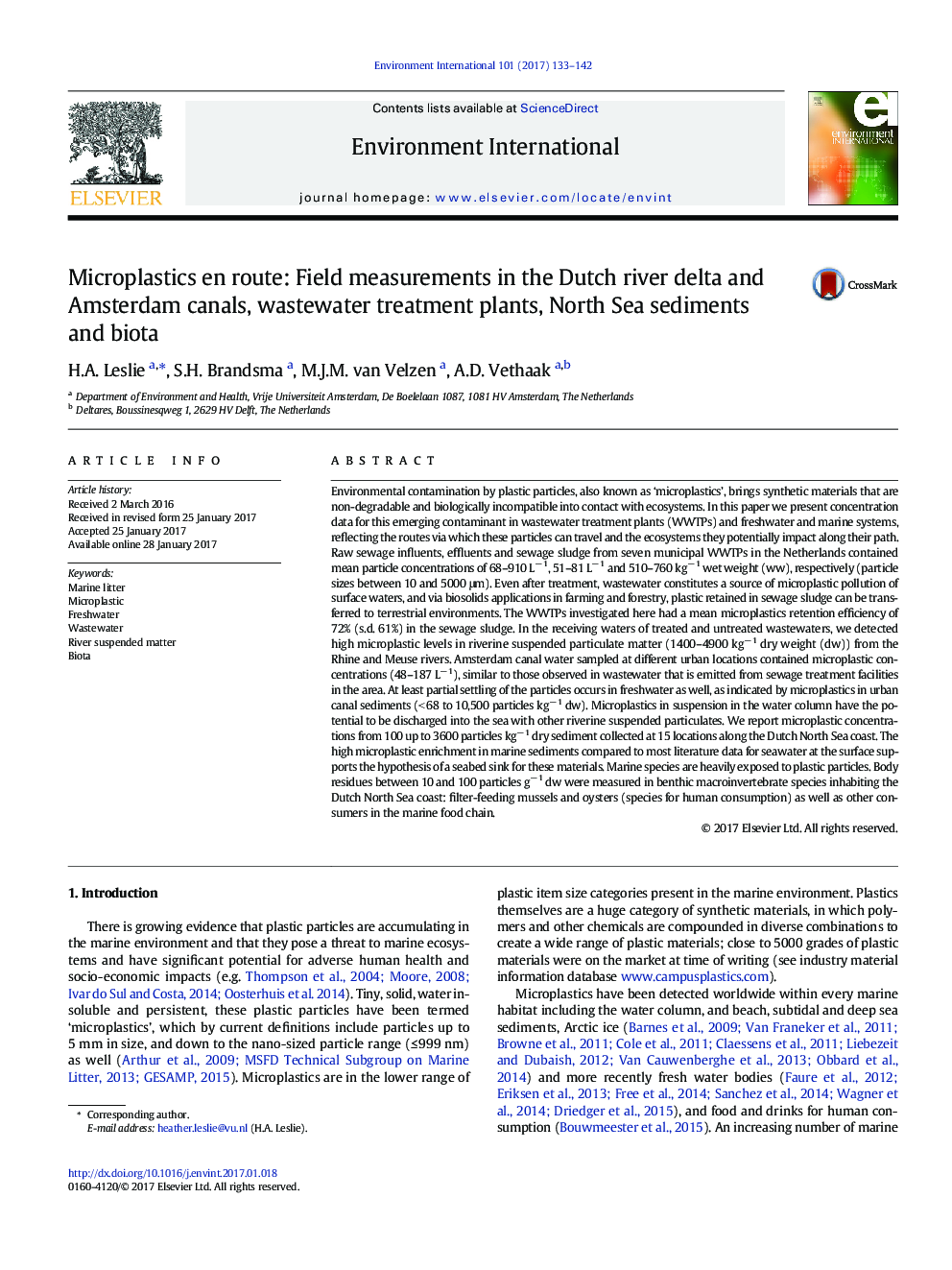| کد مقاله | کد نشریه | سال انتشار | مقاله انگلیسی | نسخه تمام متن |
|---|---|---|---|---|
| 5748283 | 1619029 | 2017 | 10 صفحه PDF | دانلود رایگان |
عنوان انگلیسی مقاله ISI
Microplastics en route: Field measurements in the Dutch river delta and Amsterdam canals, wastewater treatment plants, North Sea sediments and biota
دانلود مقاله + سفارش ترجمه
دانلود مقاله ISI انگلیسی
رایگان برای ایرانیان
کلمات کلیدی
موضوعات مرتبط
علوم زیستی و بیوفناوری
علوم محیط زیست
شیمی زیست محیطی
پیش نمایش صفحه اول مقاله

چکیده انگلیسی
Environmental contamination by plastic particles, also known as 'microplastics', brings synthetic materials that are non-degradable and biologically incompatible into contact with ecosystems. In this paper we present concentration data for this emerging contaminant in wastewater treatment plants (WWTPs) and freshwater and marine systems, reflecting the routes via which these particles can travel and the ecosystems they potentially impact along their path. Raw sewage influents, effluents and sewage sludge from seven municipal WWTPs in the Netherlands contained mean particle concentrations of 68-910 Lâ 1, 51-81 Lâ 1 and 510-760 kgâ 1 wet weight (ww), respectively (particle sizes between 10 and 5000 μm). Even after treatment, wastewater constitutes a source of microplastic pollution of surface waters, and via biosolids applications in farming and forestry, plastic retained in sewage sludge can be transferred to terrestrial environments. The WWTPs investigated here had a mean microplastics retention efficiency of 72% (s.d. 61%) in the sewage sludge. In the receiving waters of treated and untreated wastewaters, we detected high microplastic levels in riverine suspended particulate matter (1400-4900 kgâ 1 dry weight (dw)) from the Rhine and Meuse rivers. Amsterdam canal water sampled at different urban locations contained microplastic concentrations (48-187 Lâ 1), similar to those observed in wastewater that is emitted from sewage treatment facilities in the area. At least partial settling of the particles occurs in freshwater as well, as indicated by microplastics in urban canal sediments (< 68 to 10,500 particles kgâ 1 dw). Microplastics in suspension in the water column have the potential to be discharged into the sea with other riverine suspended particulates. We report microplastic concentrations from 100 up to 3600 particles kgâ 1 dry sediment collected at 15 locations along the Dutch North Sea coast. The high microplastic enrichment in marine sediments compared to most literature data for seawater at the surface supports the hypothesis of a seabed sink for these materials. Marine species are heavily exposed to plastic particles. Body residues between 10 and 100 particles gâ 1 dw were measured in benthic macroinvertebrate species inhabiting the Dutch North Sea coast: filter-feeding mussels and oysters (species for human consumption) as well as other consumers in the marine food chain.
ناشر
Database: Elsevier - ScienceDirect (ساینس دایرکت)
Journal: Environment International - Volume 101, April 2017, Pages 133-142
Journal: Environment International - Volume 101, April 2017, Pages 133-142
نویسندگان
H.A. Leslie, S.H. Brandsma, M.J.M. van Velzen, A.D. Vethaak,